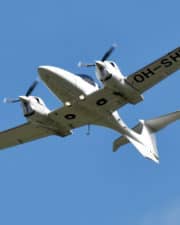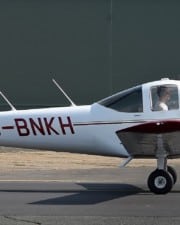A lot of a pilot’s job occurs before the flight. There’s route planning and weather forecasts to check. There are airport procedures to study and airspace restrictions to review. But one of the most important things that a pilot must complete before every flight is a review of his or her aircraft’s performance information. The aircraft’s weight and balance is an important part of that.
The performance of an aircraft changes daily with atmospheric pressure and temperature. It also changes depending on how the airplane is loaded, both with passenger and cargo and fuel.
Even non-pilots have likely heard the term “weight and balance,” but few people outside of aviation realize just how vital this concept is to safe flight. Both “weight” and “balance” constitute some of the most critical limits that airplanes have. One of the most significant responsibilities that pilots have is to keep their planes operating within its designed limits.
Why is Aircraft Weight and Balance Important?
To put it simply, aircraft are designed with specific limitations in mind. Every aircraft has airspeeds that you cannot fly faster than, flight maneuvers you can’t safely do, and weights you cannot exceed. If you exceed these limitations, you become a test pilot when you least want to become one. The plane may break, or it may not, or it may suffer internal damage that will cause some future failure. So the “weight” part of “weight and balance” is pretty simple.
The “balance” part is equally simple. Each area of the airplane is only designed to hold so much weight. You can’t pile all of the weight in one spot; you need to distribute it around. If it’s not, the aircraft’s balance in flight is affected–it’s flight controls may not work as designed, or it may not be able to maintain a safe flight attitude.
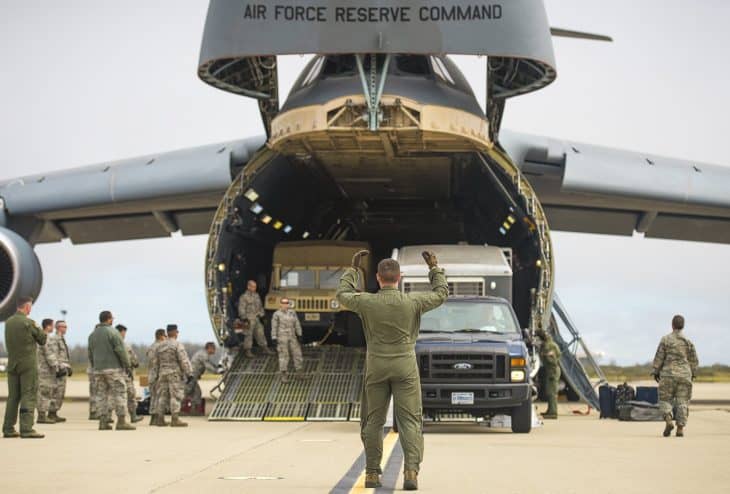
Aircraft Weight Limitations
Airplanes have quite a few different weight limitations that pilots cannot exceed. To accurately calculate an aircraft’s weight, the pilot needs to know the weights of every single object and fluid inside the aircraft, including the empty aircraft itself.
The empty weight of a plane is found inside the Airplane Flying Handbook. It’s updated occasionally by maintenance, especially if anything is removed or installed. It’s different for every single airplane in the sky, too, even if two planes are identical makes and models.
The first weight limitation pilots learn about is the easiest to calculate. The maximum takeoff weight (MTOW) is the absolute max amount that an aircraft can weight before takeoff. This number includes the plane’s empty weight, any fuel onboard, any passengers, and any bags or cargo. Even if a plane has no other weight limitations, it will always have an MTOW.
Sometimes manufacturers provide another limitation, the maximum ramp weight. This number is a few pounds heavier than the MTOW, allowing that you will burn off a little bit of fuel on your way to the runway for departure.
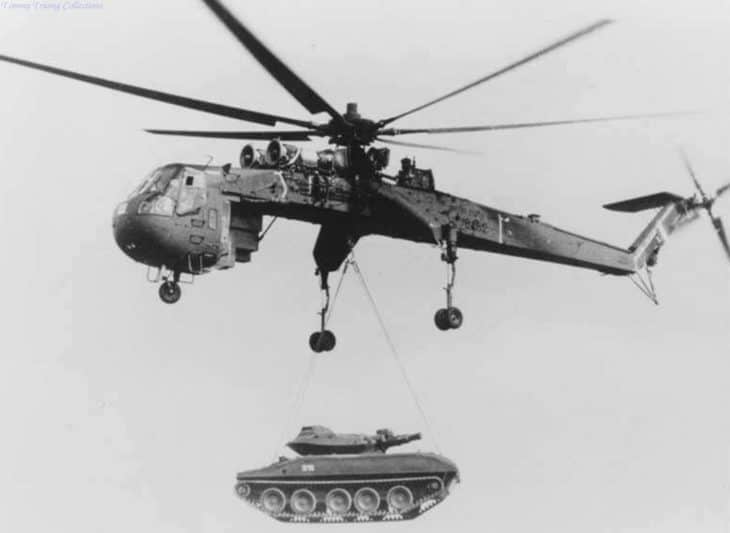
Another standard weight limitation is a maximum landing weight. On many planes, operations for the pilot are simplified by making the landing weight equal to the takeoff weight. But larger aircraft will weigh thousands of pounds more at takeoff than they do at landing, due to the enormous amounts of fuel they burn en route.
On transport category airplanes designed to travel thousands of miles, it doesn’t make sense for designers and manufacturers to spend the time and money making the landing gear and brakes capable of stopping that much weight. They can make the equipment smaller, lighter, and less expensive by setting a maximum landing weight.
Aircraft Balance Limitations
Understanding the “balance” half of the weight and balance problem requires understanding a few definitions. The balance of an airplane is what controls its longitudinal stability. That’s a fancy way of saying that messing with the plane’s balance will cause the plane to pitch up or down in unpredictable or undesirable ways.

How airplanes are loaded
As the airplane is loaded, every item is tracked based on its weight and where it is placed. All planes have some point from which everything is measured––that point is known as the datum. The datum in many planes is the tip of the nose cone, or sometimes the engine firewall.
The different locations in the plane relative to the datum are called stations. Each station has a specific arm. The arm is simply the measurement, in inches or centimeters, from the datum. If a station is located forward of the datum, it would have a negative number.
Calculating a plane’s balance is a little bit like playing on a teeter-totter (also known as a seesaw) in a schoolyard. Can a skinny kid and a chubby kid play on the teeter-totter together and make it balance? Or will the heavier kid always be hitting the floor?
The answer is that they can play, as long as the skinny kid sits farther from the pivot point than the heavy kid does. Each child’s force is relative to two factors—not just their weight but also their distance from the fulcrum. That distance from the fulcrum is known as the arm. The amount of force being applied is known as a moment.
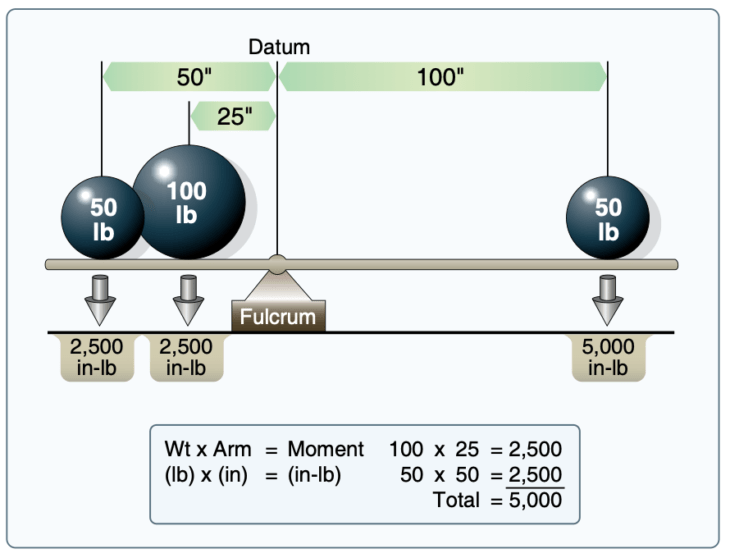
To apply this to airplanes, items that are placed farther from the datum (larger arm numbers) will have a greater moment (another way of saying that they will exert more force) on the plane than items closer to the datum. We’ll get into exactly how to calculate weight and balance in a bit.
Center of Gravity Defined
Knowing all of the total forces that everything in the plane is creating is essential. If the total forces are too far towards the tail, the plane will tend to pitch up towards the sky. If too much force is put towards the nose, the nose will want to pitch down.
If the total force is more than the designers intended, then the airplane’s elevator may not be able to counteract the nose-down or nose-up force caused by improper loading. That would make the plane uncontrollable.
The total of all of the individual forces in a plane comes together at one point. This is the focus point for all of the weight that the wings are holding up. If you were a giant, with a giant hand that could lift the plane from that one point, it would balance perfectly. That point is called the center of gravity, or simply the CG.
Center of Gravity Limitations
So how can pilots tell if their loading is as the designers of the plane intended? Well, there is an entire chapter of the Aircraft Flight Manual or Pilot’s Operating Handbook dedicated to weight and balance calculations. In it, you can find aircraft weight and balance practice problems with answers, and all of the charts and graphs you will need to calculate it for every flight.
The most important of these charts is the one that shows where the aircraft’s center of gravity can be placed. It is usually shown in inches aft of the datum, with the arm shown across the X-axis and the plane’s weight shown on the Y-axis.
Designers know that the CG needs to move around a little. The plane will be loaded differently on each flight, with different passengers carrying different baggage. Plus, the plane will burn off fuel as it flies, so the CG must be allowed to shift slightly even on the shortest flights.
The area on the graph that lies below the maximum takeoff weight, and between the forward and aft CG limits is commonly called the flight envelope. As long as the plane is always operated within that envelope, it will perform as designed.
How Will Weight and Balance Affect the Performance of an Aircraft?
If a pilot loads a plane improperly, the performance of the plane becomes unpredictable.
Operating a plane above the approved maximum weights risks structural damage. Remember, a plane isn’t just designed to take the static loaded weight. It must be designed to take the weight plus any load factor imposed by flight maneuvers.
If a plane is overloaded, it may seem to fly normally. But a sudden bump of turbulence or an abrupt flight maneuver may impose a load that the designers did not intend. Once the limit load factor is exceeded, the plane may suffer internal damage or even break apart during flight.
The balance has a more direct effect on the performance of an aircraft. If the CG is loaded forward of the limit, the plane will want to pitch nose down. The pilot can correct for this, up to a point. The size of the elevator and the speed of the air flowing over the elevator would affect this. If a plane is loaded forward of the CG limit, the plane may not rotate off the runway during takeoff as it should. If it does rotate and get into the air, it may immediately pitch nose down into the ground.
If the CG is loaded aft of the limit, then the aircraft’s nose will want to pitch up. Just like in the case of the forward CG, if it is too far aft, then the elevator may not have enough power to pitch the nose down. That might mean that the nose pitches up suddenly during flight, causing an aerodynamic stall at unusually high airspeeds.
Even changes to the CG within its acceptable limits can have some effects on performance. The farther forward the CG is, the greater the tail-down force that must be created to counteract the nose-down tendency. As a result, a plane with an aft CG will feel more responsive to the pilot and will have slightly better overall performance.
How is Aircraft Weight and Balance Calculated?
Even with all of the terms and definitions associated with this complex system, the formula for calculating weight and balance is remarkably simple. For every airplane in the sky, the same formula applies—Weight X Arm = Moment.
The formula must be completed for each thing carried in the aircraft. At the absolute minimum, it must include the aircraft’s empty weight, the pilot and passengers, any baggage or cargo, and the amount of useable fuel on board. For weight and balance purposes, avgas weighs six pounds per gallon, and Jet A weighs 6.8 pounds per gallon.

In a sample weight and balance problem, each of the above lines is totaled. In the end, the total takeoff weight can found from the sum of all weights. The total moments can be found from the sum of all individual moments. The average arm for the plane can be found from those two numbers by rearranging the formula—Moment / Weight = Arm. That arm gives you the location of the aircraft’s CG.
To make things a bit simpler, manufacturers often use an indexed moment when performing their calculations. The formula is the same, but the manufacturer may decide to divide the moments by 100 or 1000 to make the arithmetic easier on the pilot.
Exactly how the pilot checks that the plane is within limits varies slightly from aircraft to aircraft. Some planes provide charts that show the acceptable CG locations in inches aft of datum. Other planes use charts that show the total allowable moments, thereby skipping the need to calculate the CG arm. There are three methods to finding the CG–calculation, graphs, or tables. The plane manufacturer provides the information to use one or more of the three methods with their documentation.
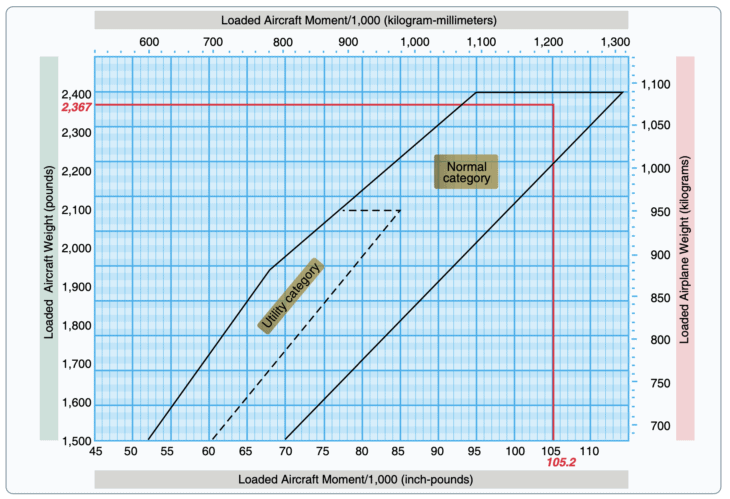
The hows and whys of weight and balance are covered in detail in the FAA’s Pilot’s Handbook of Aeronautical Knowledge, Chapter 10. Longitudinal stability and the center of gravity are covered in Chapter 5. The FAA also publishes a Weight and Balance Handbook.
Related Posts



